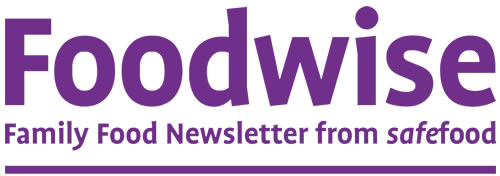Poultry meat: improving food safety by improving chemical residue surveillance

- Project start date: 1 April 2001
- Project status: Completed
- Project type: Food safety
- Discipline: Food safety - other
- Author/s: Prof Chris Elliott, Queen’s University Belfast
- Collaborator/s: Dr Michael O'Keeffe, Teagasc Food Research Centre, Ashtown, Dublin
Research objective
Poultry are highly susceptible to the parasitic disease coccidiosis and veterinary drugs called coccidiostats are routinely used on a prophylactic basis in intensive poultry production. Coccidiostats have no nutritional value and have been shown to be toxic at high doses in laboratory animals. In addition, the toxicological information on these drugs is incomplete. While the likelihood of consumers being exposed to toxic levels is very low, best practice dictates that poultry food products should not contain residues of these drugs. It is therefore important for poultry and egg producers to ensure that this does not happen.
Concerns over the presence of coccidiostats in poultry and eggs have been expressed recently in a report from the Soil Association. Results of surveillance programmes have shown the occurrence of a number of the commonly used coccidiostats in poultry products. Follow-up investigations at poultry production units and specific research studies all point to feed contamination as the likely source of residues in poultry products.
This project investigated issues with coccidiostat management through an all-island research and residue testing initiative involving the Veterinary Sciences Division at Queen's University Belfast and the Teagasc National Food Centre, Dublin.
Research report
- Title: A Review of Coccidiostat Residues in Poultry
- Publication date: 6 February 2003
- Summary: This project identified mechanisms by which the primary poultry producer on the island of Ireland can control the utilisation of medicated feed in their production facilities to ensure that coccidiostat residues do not end up in their poultry products. Specific analytical testing methods for the detection of these drug residues in poultry were developed during this project.
- Findings:
To identify the potential problem with use of anti-coccidials in the poultry and egg industry on the island of Ireland, a comprehensive series of visits and consultations was undertaken with representatives of the various elements of the poultry industry in Northern Ireland and Ireland.
Broiler/egg production on the island of Ireland is described in terms of its organisation, systems, quality assurance schemes, biosecurity measures, harvesting and restocking. Details on poultry products and markets is also provided.
Prophylaxis and treatments for coccidiosis are described covering vaccination, the drugs used in treatment, the contribution of anti-coccidials to the control of disease generally, treatment strategies used and influence of production practices on the occurrence of coccidiosis, the need for treatment and likelihood of residues occurring in poultry.
The specification and supply of feed to poultry producers, the steps taken to prevent cross-contamination during manufacture and feeding, and the analysis of feed and potential residue problems are described. - Recommendations:
The project identified practical procedures to be used, primarily at farm level, to reduce the occurrence of coccidiostats (Nicarbazin) in broilers at slaughter. These procedures were published in two formats – as Guidelines and as a Poster – and disseminated widely to the poultry industry throughout the island of Ireland in February 2006.
Other outputs
O'Keeffe, M., Capurro, E., Danaher, M., Campbell, K. and Elliott, C. T. (2007) “Investigation of the cause for the occurrence of residues of the anticoccidial feed additive Nicarbazin in commercial poultry”. Food Additives & Contaminants, 24:9, 923 – 934.
Katrina Campbell,*Terence Fodey, Jonathan Flint, Christopher Danks, Martin Danaher, Michael O’Keeffe, D. Glenn Kennedy and Christopher Elliott. “Development and Validation of a Lateral Flow Device for the Detection of Nicarbazin Contamination in Poultry Feeds”. Journal of Agriculture and Food Chemistry.
Danaher, Martin, Campbell, Katrina, O'Keeffe, Michael, Capurro, Emiliana, Kennedy, Glenn and Elliott, Christopher T. (2007). “Survey of the anticoccidial feed additive Nicarbazin (as Dinitrocarbanilide residues) in poultry and eggs”. Food Additives & Contaminants, 25:1, 32 – 40.
Briege McCarney, Imelda M. traynor, Terence L. Fodey, Steven R.H. Crooks, Christopher T. Elliott. (2003). “Surface plasmon resonance biosensor screening of poultry liver and eggs for Nicarbazin residue”. Analytica Chemica Acta 483 (2003) 165-169.
Emiliana Capurro, Martin Danaher ∗, Aniello Anastasio, Maria Luisa Cortesi , Michael O’Keeffe. “Efficient HPLC method for the determination of nicarbazin, as dinitrocarbanilide in broiler liver”. Journal of Chromatography B, 822 (2005) 154–159.




